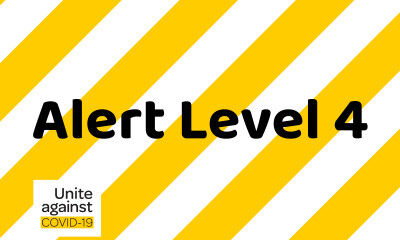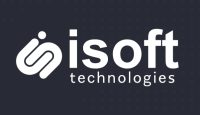
24 August 2021
Summary:
- Wage Subsidy Scheme – increased from 20 August with applications closing on Friday 3rd September
- Resurgence Support Payment – applications open 24 August with no stated close date
- Short-Term Absence Payment – increases from 24 August with no stated close date
- Leave Support Scheme – applications open with no stated close date
- Small business cash flow loan scheme – applications are open and close 31 December 2023
- Tax and ACC support – N/A
- Business debt hibernation – applications are open and close 31 October 2021.
- Financial support tool – calculate what support you can get online.
| Alert Level 1 | Alert Level 2 | Alert Level 3 | Alert Level 4 | |
| Wage Subsidy Scheme | yes | yes | ||
| Resurgence Support Payment | yes | yes | yes | |
| Leave Support Scheme | yes | yes | yes | yes |
| Short-Term Absence Payments | yes | yes | yes | yes |
| Small Business Cashflow (Loan) Scheme | yes | yes | yes | yes |
| Business Debt Hiberation | yes | yes | yes | yes |
1. Wage Subsidy SchemeApplications for the Wage Subsidy Scheme are open for two weeks at this stage. You can apply on the Work and Income website: https://www.workandincome.govt.nz/covid-19/wage-subsidy/how-to-apply.html
The payment is to support employers so they can continue to pay employees and protect jobs for businesses affected by the move to Alert Level 4 on 17 August 2021.
To reflect higher wage costs since the scheme was first used in March 2020 the payments have been increased to:
- $600 per week per full-time employee
- $359 per week per part-time employee.
More information on the Wage Subsidy Scheme — Work and Income
2. Resurgence Support Payment
The Resurgence Support Payment will open nationally from 8am on Tuesday 24 August 2021. Applications will remain open for one month after a nationwide return to Alert Level 1.
Businesses and organisations will be eligible if they experience a 30% drop in revenue over a seven day period after an alert level increase and that meet other eligibility criteria. This drop is compared to a typical seven-day period in the six weeks before the increase in alert level. Seasonal businesses should show a 30% revenue drop compared with a similar week the previous year.
The decline in revenue must be a result of the specific alert level change, not just COVID-19 in general. You must have been in business for at least six months to be eligible. Charities, not-for-profit organisations, the self-employed and pre-revenue businesses, such as start-ups may also be eligible.
This payment is not a loan, so does not need to be repaid. The payment must be used to help cover business expenses such as wages and fixed costs.
There have been some recent changes to the eligibility criteria for commonly owned groups.
You can also calculate how much you may be entitled to and how to apply on Inland Revenue’s website.
Eligibility for the Resurgence Support Payment – Inland Revenue
Apply for the Resurgence Support Payment – Inland Revenue
If you don’t meet the criteria for RSP but do have cash flow problems, Inland Revenue can help. Visit their Manage my tax page for more information.
Manage my tax – Inland Revenue
3. Short-Term Absence Payment
A COVID-19 Short-Term Absence Payment is available at all Alert Levels to employers to pay workers who follow public health guidance and are staying home while waiting for a COVID-19 test result. It’s also available to eligible self-employed workers. To be eligible, workers need to be unable to work from home and need to miss work while waiting for the test results.
There’s a one-off payment of $350 for each eligible worker. From 24 August 2021, this payment is increasing to $359 for each eligible worker. Employers or the self-employed can apply for any worker once in any 30-day period.
More information and how to apply – Work and Income
4. Leave Support Scheme
The COVID-19 Leave Support Scheme provides a payment to businesses to pay their workers who meet certain health criteria, eg they have COVID-19. This is also available if you’re self-employed.
If you, or your staff have been told by a health official to self-isolate and cannot work from home, you can apply for the COVID-19 Leave Support Scheme.
This support will be paid as a lump sum covering two weeks (you can reapply if required) of $585.50 per week for full-time workers and $350 per week for part-time workers. From 24 August 2021, the payment will increase to $600 per week for full-time workers and $359 per week for part-time workers.
Under changes to this scheme in 2020, businesses are no longer be required to show an actual or predicted revenue drop or that their ability to support an employee was negatively impacted by COVID-19, to be eligible to access the payment.
Leave Support Scheme — Work and Income
How to apply for the Leave Support Scheme — Work and Income
5. Small Business Cash Flow Loan Scheme (SBCS)
The Government will provide loans to small businesses, including sole traders and the self-employed, impacted by COVID-19 to support their cash flow needs.
If you’ve previously applied for a SBCS and have fully repaid it, you can apply again.
Applications are open until 31 December 2023. You can apply through myIR.
The small business cash flow loan scheme will provide assistance of up to a maximum of $100,000 to businesses employing 50 or fewer full-time employees. This includes sole traders and self-employed businesses.
Details of the loans include:
- $10,000 to be provided to eligible businesses
- an additional $1800 per equivalent full-time employee
- interest free if the loan is paid back within two years
- an interest rate of 3% for a maximum term of five years
- repayments not required for the first two years
- you must show at least a 30% drop in revenue due to Covid-19, measured over a 14-day period in the past six months compared with the same 14-day period a year ago. If your revenue from the same period a year ago was also affected by COVID-19, compare the same 14-day period two years ago.
- maximum amount you can borrow depends on the number of full-time and part-time employees.
Use the small business cash flow loan scheme eligibility tool and find out how to apply.
COVID-19: Small business cash flow loan scheme eligibility tool
myIR — Inland Revenue
If your businesses doesn’t have a myIR account, you will need to create one to apply.
Register a myIR account for a business or organisation — Inland Revenue
Most applicants will receive their loan payment in full from Inland Revenue within five working days. You don’t have to accept the full loan amount you’re offered, and can decide to take a smaller loan.
6. Tax and ACC support
If you’re having difficulties meeting your tax obligations due to COVID-19, Inland Revenue has various support schemes and options to help.
COVID-19 business and organisations — Inland Revenue
ACC levy invoices for the 20/21 financial year would usually have been sent from 1 July, but will now be sent in October. ACC has more information about delayed invoices and guidance to help.
Easing the COVID-19 burden on businesses — ACC
If you are having trouble making ACC payments, ACC has guidance to help. If you are no longer in business, it’s also a good idea to let ACC know.
General COVID-19 information for businesses — ACC
7. Business debt hibernation
Business debt hibernation is a government initiative created in response to COVID-19. It helps companies, trusts, and other business entities affected by COVID-19 to manage their debts. Applications are open until 31 October 2021.
If business debt hibernation is right for your business, this is how it helps you manage your debts:
- You set up an arrangement for your existing debts, eg paying your creditors only a percentage of what you owe them on time and delaying the rest.
- You get up to a month of protection while you set up the arrangement, meaning most creditors can’t enforce their debts, eg applying for your business to be liquidated.
- If your creditors agree, you get a further six months of protection.
Use the business debt hibernation decision tool to find out if it’s a good option for your business and if so, how to get started.
COVID-19: Business debt hibernation
8. The R&D tax incentive
The R&D tax incentive operates as a tax credit, rewarding businesses and individuals who perform R&D activities. – https://www.ird.govt.nz/research-and-development/tax-incentive
9. Financial support tool
Figure out what support is available via this online tool. There are different support options based on whether you are an employer, self-employed or a sole trader.
https://covid19.govt.nz/business-and-money/financial-support/financial-support/





